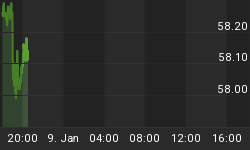If you’re reading this, you’re probably already gearing up for the holiday season and getting ready to make some purchases. And you just might have them delivered by … drone. But only if you’re a member of the “tight-knit” 22,000-strong community of Christiansburg, Virginia.
Commercial drone delivery is here, but only for the select few. In fact, it’s probably the first time in history that the newest tech advancement hits the small-town before it can go urban.
Wing, an offshoot of Google’s parent company Alphabet, is launching a pilot program this fall with Walgreens and FedEx to eligible customers in this small town, whose claim to drone fame is that it doesn’t have any high-rise buildings or other architectural obstructions.
According to the company’s blog, with a three-foot wingspan and weighing a little over 10 pounds, Wing drones can fly at speeds up to 70 miles per hour. While that combination could cause serious damage in the event of a crash, drones are equipped with extra motors meant to prevent falls, and all flights are overseen remotely by certified pilots.
Also, Wing drones don't land at drop-off sites; instead, they hover some 20 feet in the air and lower their cargo to the ground on a tether, to reduce the chances of packages falling on someone’s head.
In April this year, Wing was the first company to receive Federal Aviation Authority (FAA) approval for door-to-door drone delivery.
However, like any other industry, competition here is tough.
Related: SoftBank Urges WeWork To Pause IPO Plans
Earlier this month, UPS also received permission from the FAA to operate delivery drones at universities, hospitals, and corporate campuses. UPS teamed up with drugstore CVS to develop a drone delivery service for prescription drugs.
Some six years ago, Amazon CEO Jeff Bezos predicted that the online retail giant's "octocopter" drones would start buzzing out of fulfillment centers in the coming years. It wasn’t until late 2016 that Amazon announced its first fully autonomous Prime Air delivery. Since then, it's been testing its delivery drones, so we haven’t seen them yet.
It’s hardly a novel idea, but efforts have been hindered by the FAA over safety and privacy.
However, in January, the Trump Administration put out a proposal to allow drones to fly over heavily populated areas and at night--two factors that have halted drone delivery efforts in the past.
As something different, Uber aims to roll out a fleet of food-delivery drones for 2021.
A job post from last week, which Uber later removed from its website, indicated that the company was looking for an operations manager to handle delivery drones.
The meal delivery service launched a test program in San Diego over the summer in partnership with McDonald's. Local opposition has been rife, though, over noise concerns.
The kinks aren’t likely to be worked out for Christmas, with the exception of Christiansburg, Virginia, but everyone knows it’s the future reality.
According to an Allied Market Research report, the global commercial drones market is estimated to reach $10.28 billion by 2022, registering a compound annual growth rate (CAGR) of 25.2 percent from 2016 to 2022.
In the meantime, if you’re looking to get rid of stuff from your cluttered house, the internet community is buzzing with a foolproof way: Pack it up nicely in Amazon boxes and leave it in the driveway. A drone won’t pick it up, but someone else just might.
By Michael Scott for Safehaven.com
More Top Reads From Safehaven.com:
















